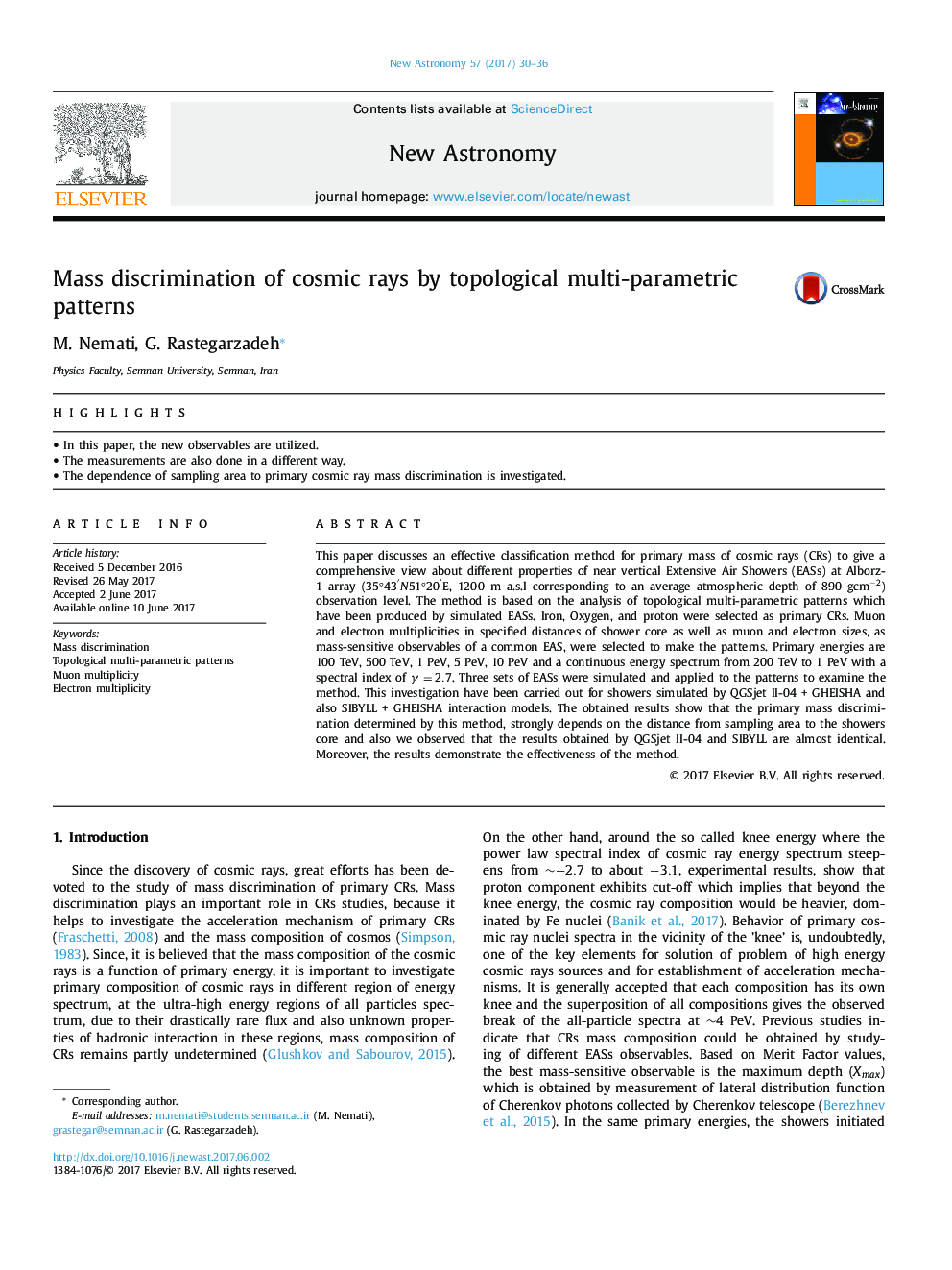| کد مقاله | کد نشریه | سال انتشار | مقاله انگلیسی | نسخه تمام متن |
|---|---|---|---|---|
| 5487735 | 1523721 | 2017 | 7 صفحه PDF | دانلود رایگان |
- In this paper, the new observables are utilized.
- The measurements are also done in a different way.
- The dependence of sampling area to primary cosmic ray mass discrimination is investigated.
This paper discusses an effective classification method for primary mass of cosmic rays (CRs) to give a comprehensive view about different properties of near vertical Extensive Air Showers (EASs) at Alborz-1 array (35°43â²N51°20â²E, 1200 m a.s.l corresponding to an average atmospheric depth of 890 gcmâ2) observation level. The method is based on the analysis of topological multi-parametric patterns which have been produced by simulated EASs. Iron, Oxygen, and proton were selected as primary CRs. Muon and electron multiplicities in specified distances of shower core as well as muon and electron sizes, as mass-sensitive observables of a common EAS, were selected to make the patterns. Primary energies are 100 TeV, 500 TeV, 1 PeV, 5 PeV, 10 PeV and a continuous energy spectrum from 200 TeV to 1 PeV with a spectral index of γ=2.7. Three sets of EASs were simulated and applied to the patterns to examine the method. This investigation have been carried out for showers simulated by QGSjet II-04 + GHEISHA and also SIBYLL + GHEISHA interaction models. The obtained results show that the primary mass discrimination determined by this method, strongly depends on the distance from sampling area to the showers core and also we observed that the results obtained by QGSjet II-04 and SIBYLL are almost identical. Moreover, the results demonstrate the effectiveness of the method.
Journal: New Astronomy - Volume 57, November 2017, Pages 30-36
